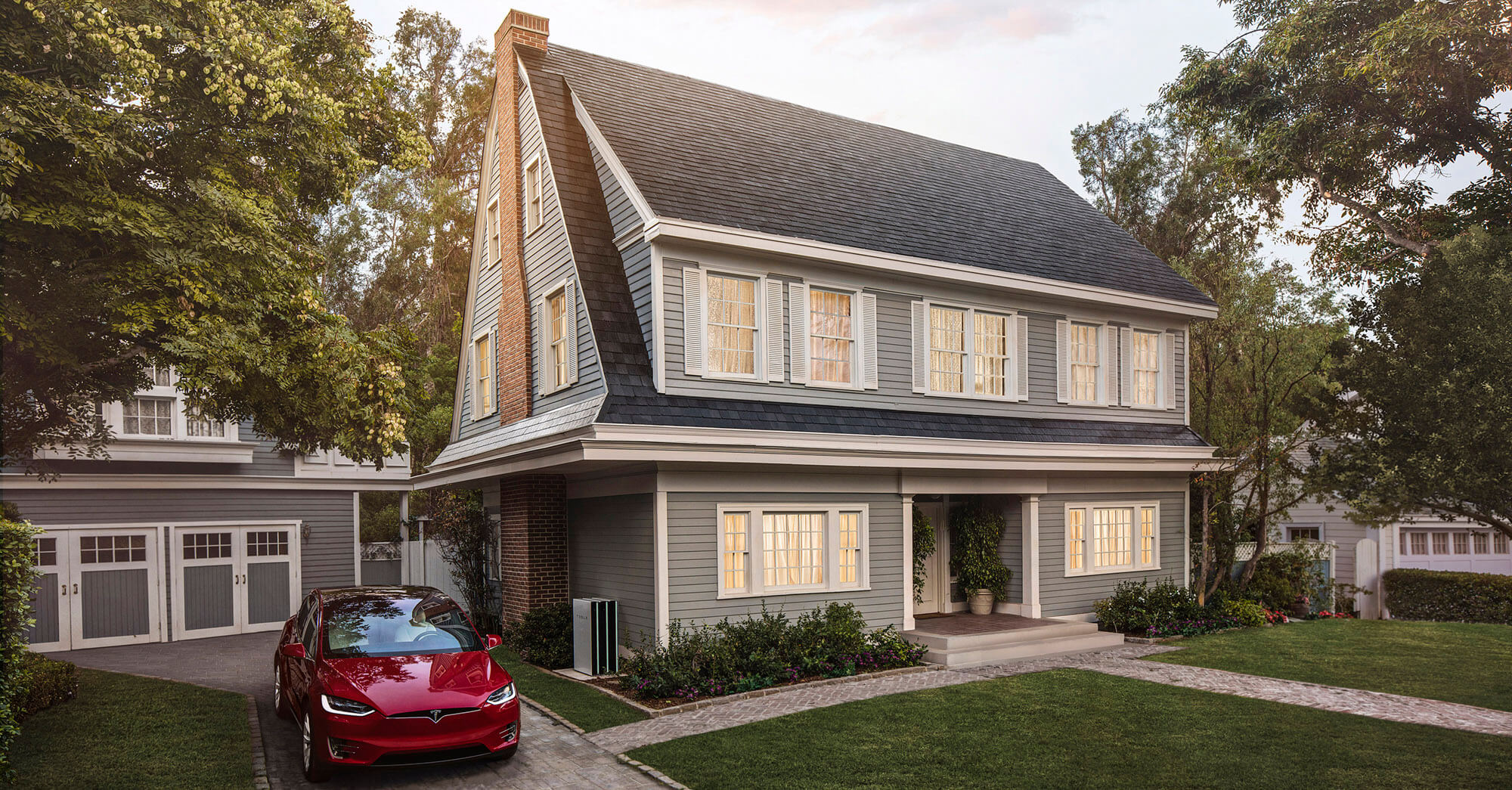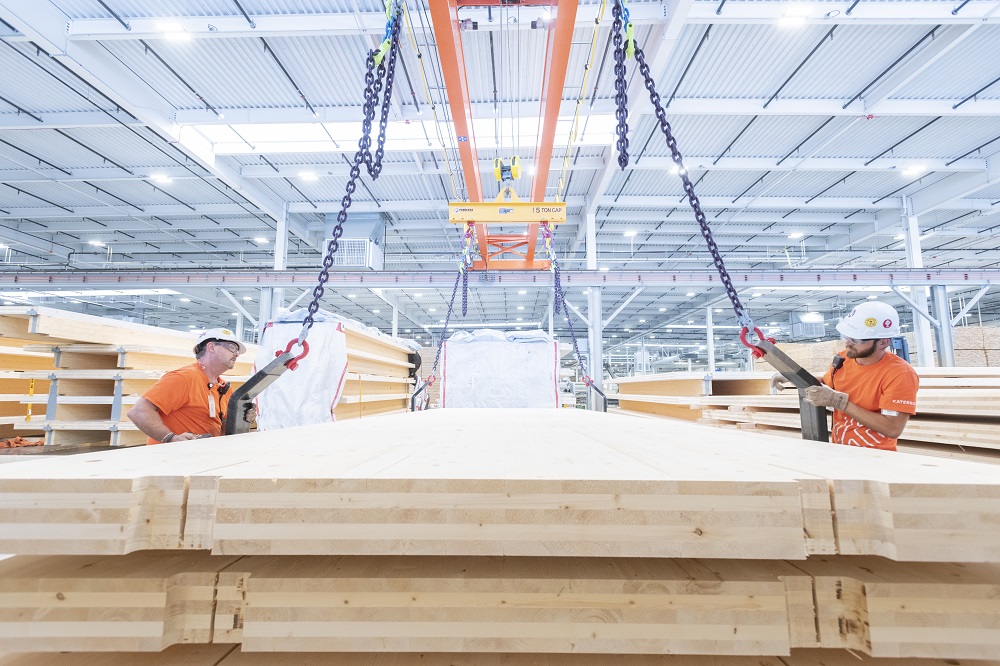Tesla Solar Roof
As the world not only becomes more familiar with green products, but also starts demanding them, researchers and contractors alike need to be ready to embrace the ever-changing world and meet their customer’s demands. Each year, new products are released that hoping to reduce waste or harness renewable energy sources, but only some of them reach the mass market.
Below are 8 green products, processes, and stories that we found most interesting in 2017:
8. Light Colored Asphalt Paint to Reduce Heat Island Effect
Asphalt is used on roadways in a large portion of the United States. It provides some benefits over concrete pavement, but it also retains more heat due to its dark color, which creates heat island effect in warm months.
One of the hottest parts of the Los Angeles area is Canoga Park, located in the San Fernando Valley. For that reason, the LA city officials are testing out a “cool pavement” coating to hopefully reduce the increased temperatures that asphalt causes.
10,000 square feet of a street in the area was coated with a paint-like material called CoolSeal, made by a company called GuardTop. Although the product is applied like paint, it’s actually an asphalt-based sealcoat.
We ranked this one #7, because, while it has a real world application, its use seems like a temporary and expensive-to-maintain solution. Find more information in the link below the video:
Full story: Los Angeles is Painting Asphalt Lighter Color to Reduce Heat Island Effect | Construction Junkie
7. Adding Cigarette Butts to Asphalt
There’s been no shortage of ideas on how to improve asphalt. Much like the asphalt coating product mentioned above, researchers in Melbourne, Australia also wanted to help reduce heat island effect caused by the material. Their solution: recycled cigarette butts.
The researchers found that placing cigarette butts encased with paraffin wax solves two problems at once: it reduces landfill waste while also improving upon asphalt’s design. The cigarette butts do not improve the strength of asphalt, but they do help reduce the heat island effect of the pavement by reducing the bulk density and increasing the porosity of the bitumen.
Full story: Researchers Show that Adding Cigarette Butts to Asphalt Reduces Heat Island Effect, Pollution | Construction Junkie
6. Turning Recycled Beer Bottles into a Sand Substitute
Sand is a material used in a variety of construction products, like concrete, mortar, brick, and asphalt, but according to many reports, sand supplies are dwindling. There have been some efforts in the past to help the sand supply issues, but a New Zealand beer company took their efforts a step further and have promised to turn empty glass beer bottles into a sand replacement.
DB Export, a New Zealand beer company, has built glass beer bottle crushing machines that they hope can help save the world’s sand reserves. The machine has a beer bottle specific shape that they say removes the label and the silica dust, while turning the glass into 200 grams of sand substitute in 5 seconds.
AdWeek reports that DB Export has already reached a deal with New Zealand’s largest producer of bagged concrete, DryMix. That’s a pretty big deal. More than 28 billion glass jars and bottles end up in landfills every year in America, according to Recycle Across America, so not only could this process help our industry, it could also greatly reduce the size of landfills.
Full story: Beer Company is Recycling Glass Bottles into a Sand Substitute for Construction Projects | Construction Junkie
5. Plastic Roads That Might Reduce Pot Holes and Landfill Waste
Plastic is a major problem for landfills, as well, as it can take an estimated 500 years to fully decompose. One UK company believes they can solve both maintenance and environmental problems through the use of recycled plastic.
MacRebur was founded by Toby McCartney, who was inspired after helping a charity in Southern India sort through a landfill to find reusable items. Some of the plastics found were placed into pot holes around India and lit on fire to help patch the hole. Knowing that lighting plastic on fire was not a viable solution in many areas, McCartney teamed up with two of his friends to develop a product now known as MR6.
MR6 is an asphalt additive that not only reduces the amount of bitumen needed in the mix, but also increases the tensile strength the pavement. Made from 100% waste materials, MR6 comes in pellet form to make it easy to mix into the asphalt. Company states that, besides increasing the tensile strength, it also improves cohesion/adhesion, improves fuel resistance, helps to resist deformation and rutting, increases resistance to cracking and fatigue failure, and lengthens the lifespan of the road. Initial tests have shown that this additive can outperform standard British asphalt by 60%.
Full story: Plastic Roads Could Reduce Pot Holes, Reduce Landfill Waste | Construction Junkie
4. Turning Food Waste into Building Materials
Arup, the company behind the living wall scaffold cover and the plastic modular bridge, recently turned its attention to another idea in 2017 to try to make the world a little more green. In order to reduce food waste, they have proposed ways to use the waste in construction materials.
According to Architect Magazine, the proposal states that using organic waste in construction could provide benefits in technical, social, and economic areas. Some of their ideas include adding peanut shells into interior partitions, adding potato peels into insulation to aid in fire performance and repelling water, and incorporating banana and pineapple fibers into carpets.
Full story: Can Food Waste be Turned into Building Materials? Arup Thinks So. | Architect Magazine
3. Battery Powered 50-Ton Dump Truck
Battery powered vehicles can’t be powerful enough to work in construction, can they? That’s not what a team of companies in Switzerland think. They’re not going small scale, either.
Using the body of a used Komatsu HD 605-7, a 50 ton (45 metric ton) behemoth of a vehicle, the research group will replace its existing diesel engine with a 5 ton (4.5 metric ton) battery pack that provides 700 kWh of storage capacity. 700kWh is as much as 8 Tesla Model S cars.
When the truck travels downhill into a quarry, it will actually generate more electricity which will power it back up the hill. The group hopes that the power generated going downhill will actually be more than is required by the uphill travel with an empty load, allowing it to work longer without a charge. Over its 10 year test, it will be expected to transport material from a mountain ridge down to a valley around 20 times per day.
The vehicle will travel through slopes up to a 13% incline and each decline is expected to generate 40 kWh. The project is expected to cost in the millions of dollars.
Full story: World’s Largest Battery Powered Dump Truck is Being Developed | Construction Junkie
2. World’s First Solar Panel Road
Using the millions of miles of roadways throughout the world to also create power seems like a no brainer, the asphalt and concrete we’re using now aren’t really accomplishing anything more than handling the traffic on the road. But, there’s also a very strong reason why those products are used: they’re strong, reliable, and relatively durable. Still, many researchers believe there is a lot of unharnessed potential for roads and the world now has a very strong test subject for the future of solar roadways in Tourouvre-au-Perche, France.
Wattway, a pholtovaltaic road pavement system, has been in development stages for the past 5 years. Colas, a worldwide infrastructure company, and INES, the National Institute for Solar Energy, joined forces to create what they think is the future of roads. Unlike other solar road systems, Wattway uses existing roads as the base and the solar panels adhere directly on top. The material, which is less than an inch thick, allows for both the thermal expansion of the material beneath, as well as the ability to handle the load from vehicles driving on it, according to the company.
Last year, a small village in France, named Tourouvre-au-Perche, became the first to have the system installed on its roads and the first in the world to have a solar road of any kind. A 0.6 mile (1km) road in the village has been covered by over 30,000 square feet (2,800 square meters) of solar panels, according to The Guardian. The road, which is expected to handle around 2,000 vehicles a day cost over $5.3 million (€5m) to complete. The panels will undergo a test period of 2 years in order to determine their true durability and figure out how much energy they can actually generate. Initial tests have indicated that it will take 215 square feet of panels to power the average French household, as panels that lay horizontal have proven to be much less efficient than those that are tilted.
Full story: France Officially Unveils World’s First Solar Panel Road | Construction Junkie
1. Tesla Solar Roof Shingles
There’s no better way to encourage people and companies to “go green” than to make it cool. Elon Musk is a master at making new technology cool, as we’ve seen with Telsa’s battery powered vehicles. Musk and Tesla made major headlines again last year when they announced they would begin taking orders and installing their new solar power roof shingles and then followed through on their promises.
Telsa Solar Roof turns previously a previously ugly product in solar roof panels into an basically invisible form of energy production. The solar cells are located inside of shingles themselves and, from ground level, look just like normal shingles. The shingles are currently available to order in a textured and smooth finish, but will also be available in a Tuscan style and slate look tile in the future.
Full story: Tesla to Begin Taking Orders for Solar Roof Shingles in April, Install Later This Year | Construction Junkie











Like most of the other electric machines that have been announced previously, Volvo promises that this midsized, 14 metric ton excavator will have the same performance as a similarly sized diesel version. The X03 is currently in the concept stage, so Volvo does not have immediate plans to bring it to market, but it shows the possibilities that electronics on heavy machinery can allow for.